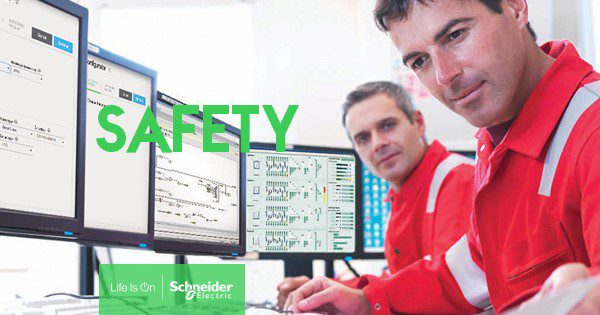The Digital Revolution. Industry 4.0. The Industrial Internet of Things. The Fourth Industrial Revolution. Call it what you will but today’s fast accelerating technological evolution is forever changing the business of manufacturing. There’s a lot to get excited about on the digital frontier. Organizations the world over are investing vital resources in innovative technologies and practices as they embark on a journey towards the “digital promised land.” But when modernization takes over, what happens to existing industrial operation systems and what about safety instrumented systems?
What about Safety?
Safety instrumented systems are often a victim of their own success. It’s been said that, “the best safety systems are the ones no one knows about!” Safety instrumented systems for Emergency Shutdown (ESD), Fire and Gas (F&G), Burner Management (BMS), High Integrity Pressure Protection (HIPPS), and the like are continuously performing critical functions to keep operations, equipment, people, and profit safe. They go about their business, 24/7, silently, in the background without anyone knowing. It is a testament to Schneider Electric’s EcoStruxure Triconex (and others’ safety instrumented systems) that many of the original systems installed in the late 1980s and early 1990s are still operating as safely and reliably today as they were on the day they were first put into operation.
For safety professionals, this can be both a blessing and a curse. Because safety systems continue to operate safely, engineers are challenged to obtain support and budget approval to upgrade legacy safety systems as they approach the end of their useful life. By flying under the radar, how do safety systems compete for attention, money and resources? How do safety engineers join the caravan to the digital promised land?
Why Upset the Status Quo?
Short of failures that lead to unexpected downtime, the need to upgrade any safety system is often highly scrutinized and questioned. Searching for economic benefits to justify a safety system upgrade or replacement has been a major issue for most enterprises since the first generation of safety systems needed to be replaced with the next. Many operational managers become frustrated with their plant’s lack of investment in safety, leaving the facility to run on outdated safety systems that present a risk to the business. Whether you work in operations, maintenance, support, or corporate engineering, some of these excuses may sound familiar:
- “Everything is working with the safety instrumented system. The systems are reliable. Why should we touch them?”
- “The plant has never experienced an unexpected outage caused by the safety system failure, so why change anything?”
- “Engineering is afraid to touch the safety system as they no longer have the expertise, knowledge, or documentation.”
- “Our corporate engineers must support multiple plants and they are too busy accommodating the disparate legacy systems in use across our different operating assets to make any changes.”
The combination of aging manufacturing assets and diminishing budgets has made this situation all too common in recent years. Capital improvement proposals for safety systems are often rejected during the annual funding cycle in favor of other plant modernizations, and safety professionals are forced to limp along for another year. Doing a “replacement in kind” provides little or no benefit. There needs to be additional value created for the business or else why upset the status quo?
7 steps to win safety system modernization approval
To get to the digital promised land, investment in safety systems is evitable. Forward-thinking manufactures recognize that a change of one or more generations in hardware and software brings an opportunity to reap future financial benefits. But to realize those benefits, the system upgrade or replacement must also perform new and different functions, providing new value in the digital world.
The justification for a safety system upgrade is seldom a single factor. Many considerations combine to ultimately build a successful case for modernization. In this series, we will follow seven steps to build an effective business justification and win that all-important approval to successfully secure money and resources for your new safety model.
Step 1 – Determine the funding approach
When considering funding requests for upgrades, the first step in the justification process is to determine what funding to initially request. Typically, there are two options for consideration: request funding for the full project or request funding for a Front End Loading (FEL) study, to better define the scope, budget, schedule, resources, risks and other project details.
Step 2 – Win hearts and minds to build consensus
A critical success factor in any safety system migration or upgrade project is to include as many stakeholders as possible in developing the business case. Including parties with a vested interest early in the process to fully understand and address their needs not only helps build a solid case but also strengthens support for the project.
Step 3 – Identify the best time to upgrade
Identifying the proper timing to undertake the upgrade is critical to success. Consider import factors such as:
- Reliability
- Total cost of ownership
- System performance
- Availability of spares and expertise
- Access to the equipment
- Production needs
- Downtime
- Prioritization with other projects
- Company directives
- Standards compliance
- Cybersecurity
- Support costs
Timing is not an exact science, however. Whenever an element is out of balance, it can signal that it is time to evaluate if an upgrade is necessary.
Step 4 – Take a risk-based approach
A critical decision to keep an existing system (upgrade in place) or take it out and replace with all new (rip and replace) may be required. We will use a checklist to systematically determine the best approach.
Step 5 – Define the ROI
Many upgrades are too often justified on the downside. It could be the consequence of a failure, loss of production, potential safety consequence, environmental impact, increasing costs, etc. This seldom leads to a successful budget application. In many successful cases, the safety instrumented system upgrades are part of a larger vision or initiative. They are an essential part of the journey to the digital promised land.
Step 6 – Focus on the benefits, benefits and more benefits
The goal of the new project is not to compare old and new systems, but to compare project investments to their gains. In general, the outcome needs to create additional value to the organization, either reducing bottom line costs, improving operating margins or creating increased revenue.
Step 7 – Pitch to Win
Ultimately, success depends on the ability to sell the value to the decision makers. Never has a pitch been so important. Make sure that you put yourself and your request in the strongest winning position.
Be sure to check out the entire blog series to help you win that all-important approval to upgrade your safety instrumented system.
Modernizing Safety Instrumented Systems: 7 Steps to Approval
Modernizing Safety Instrumented Systems: Step 1 Funding Approach
Modernizing Safety Instrumented Systems: Step 2 Build Consensus
Modernizing Safety Instrumented Systems Step 3 Decide When
Modernizing Safety Instrumented Systems Step 4 Use a Risk Approach
Modernizing Safety Instrumented Systems Step 5 Define a Winning ROI
Modernizing Safety Instrumented Systems: Step 6 Focus on the Benefits
Modernizing Safety Instrumented Systems: Step 7 Pitch to Win

Download IIoT for Process Safety White Paper




Conversation
Great article Steve!
I’d love to have you on my show to discuss this with my audience – please drop me an email if you’re interested!
Shawn Tierney at The Automation Blog